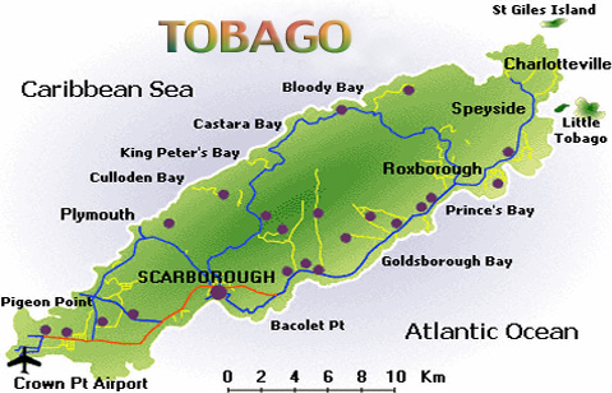
Tobago featured so strongly in the life of John Paul that I was curious to see that small island so far away, across the Atlantic. So as a little add on to my holiday in Barbados I flew to Trinidad and then on to Tobago to see for myself the island and to follow in the footsteps of John Paul.
So on the 11th October 2019 we landed on Tobago, a small, mountainous, tropical island which is volcanic in origin. It has a land area of 300 km² and is approximately 40 kilometres (25 miles) long and 10 kilometres (6.2 miles) wide. It is located at latitude 11° 15′ N, longitude 60° 40′ W, slightly north of Trinidad. Tobago had a strategically important position in the Caribbean in the time of sailing ships, as it has access to all the Windward Islands, once the sails had caught the easterly trade winds. This is the reason it was fought over many times between the British, French, Spanish and Dutch.
The southwest of the island near the airport is flat and consists largely of coralline limestone. The hilly spine of the island is called the Main Ridge. The highest point in Tobago is the 550-metre (1804 ft) Pigeon Peak near Speyside. The island has very few roads and they nearly all follow the coastline, as the interior is rainforest and full of ravines.
I stayed in Scarborough, the capital town where John Paul arrived on May 1770 on the John, a Kirkcudbright owned ship. Trouble began for John here because he had flogged Mungo Maxwell, the ship’s carpenter during the passage, for incompetence and disobedience. He was the son of a Kirkcudbright worthy. Maxwell went ashore and lodged a formal complaint against John Paul, showing the authorities of the Vice-Admiralty Court the scars from the flogging. The complaint was dismissed as “neither mortal nor dangerous”. Maxwell refused to go home with John Paul and boarded another ship the Barcelona Packet on which he later contracted yellow fever and died. When that ship returned to Kirkcudbright, Robert Maxwell raised a charge of murder against John Paul. When the John returned home, John Paul was arrested and put in the Tollbooth jail in Kirkcudbright, Scotland. He was released on bail on condition he would go and find evidence to clear his name.
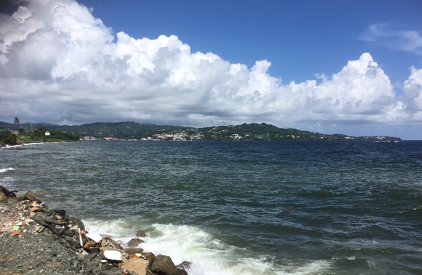
Rockley Bay, Scarborough, Tobago
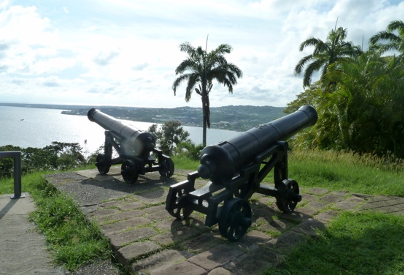
Rockley Bay from Fort King George
On 30th June 1772 John Paul returned to Tobago, to gather evidence and he obtained an affidavit from the Judge of the Vice-Admiralty Court, exonerating him from the charges brought by Robert Maxwell. He also got an affidavit from the Captain of the Barcelona which gave evidence that Maxwell was in good health when he joined his ship.
John returned to London and sent the documents to his mother in Kirkbean, who took them to Kirkcudbright and with this evidence, he was cleared of all charges. In October 1772 he obtained command of the Betsy of London which plied between England, Ireland, Madeira and Tobago. He formed a partnership in Tobago with a man called Archibald Stewart, a fellow Scot, who was a local merchant and planter. Stewart was a direct descendant of King Robert III of Scotland and the son of Sir Michael Stewart, 3rd Baronet of Blackhall, Scotland. By 1773 John Paul had amassed a small fortune of £2,500.
John Paul returned to Scarborough, Tobago arriving on 3rd October 1773. While Captain of the Betsy in Tobago, he had a dispute over wages with one of the crew and ended up killing the man. The crew had signed up for a round trip from Britain, but several of the crew were local to Tobago and wanted to be paid and leave the ship. John needed all the cash he had, to buy return cargo and so he refused. The ringleader came at John Paul with a bludgeon to hit him and John drew his sword and the sailor fell on it. John Paul went ashore to report the incident as self-defence but was advised by Lt. Governor Sir William Young, that it could be seen as murder especially as the man was a local.
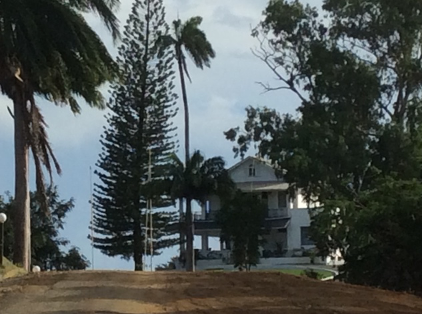
Arcadia and the lone Scot’s Pine
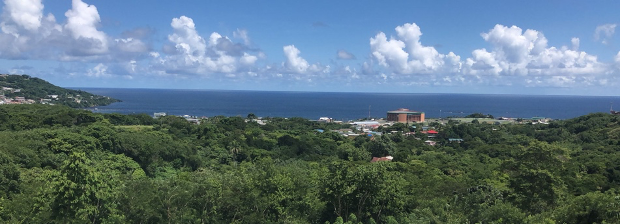
The view from Arcadia over Scarborough
The Lt Governor’s house was on Orange Hill and so I asked locals if there was a house that was still the Lt. Governor’s residence, or had been and were told there was one called Arcadia. It was at the top of Orange Hill and could be seen from far off, because of the tall Scots Pine tree, the only one on the island! Here it gets interesting, because that Scots Pine must have been brought over by a Scotsman. Sir William Young was stated as being from Auchenskeoch, which I thought was just co-incidentally the same name as a place about 5 miles from Kirkbean, Scotland. But, the Young family were the owners of Auchenskeoch Castle for several generations and the castle is now a ruin in the farmyard of Castle Farm at Southwick, Scotland. Young was one of the first to buy land in St Andrews, Tobago with his brother Robert Young, These land lots were Lot no.s 12-14 and no.s 15-16. Sir William Young was the Lt. Governor in Tobago from 1771-1777.They called this land Auchenskeoch after their home in Scotland and there is still a road called Auchenskeoch Road where the plantation was, near Scarborough. William, the son of Alexander Young and Mary Herries, was killed in a duel with a P. Franklyn in 1777. His son, also, William became Lt Governor from 1807-January 1815.

Sir William Young 1st Baronet
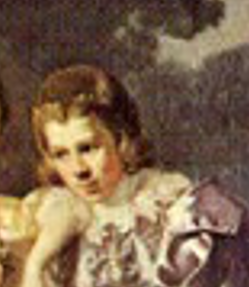
Sir William Young 2nd Baronet
I think this close connection to John Paul’s home in Kirkbean would be one of the reasons the Lt. Governor was so lenient on John Paul and advised him to disappear for a while after the incident. Sir William thought he would have a better chance if tried by an Admiralty Court, rather than a local one. So John borrowed a horse and rode across the island to Plymouth on Great Courland Bay, a distance of about 6 miles. He left all his affairs in the hands of his partner Archibald Stewart and his agent Stuart Mawey, and took only £50 cash with him. He is thought to have caught a ship leaving Plymouth and disappeared to Virginia, America where his brother lived.

Great Courland Bay, Plymouth, Tobago
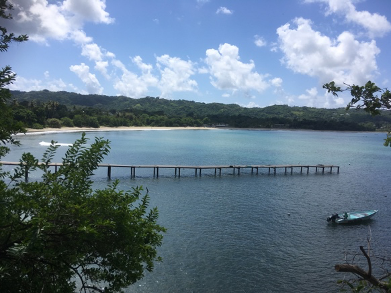
Great Courland Bay, Plymouth, Tobago
Archibald Stewart, John Paul’s partner in Tobago, bought land at Queens Bay (St. Paul) Lot no.18 (200acres) in June 1770. By 1773 he owned this and another at Queens Bay Lot no.5 (500 acres). These plots were originally purchased by D. Mill and A. Young on 10/3/1767. This A. Young was probably Major Alexander Young brother of Sir William Young, the Lt. Governor of Tobago previously mentioned. The two plots were merged and named Roxborough Plantation, near the village named Roxborough, on the east coast of Tobago. The plantation is now a cocoa plantation. In John Paul’s day the main crop would have been sugar. I visited Roxborough and drove up the winding road only to find the gates padlocked. Archibald Stewart transferred his lands to another brother Sir Michael Stewart in 1775. John Paul’s possessions were left in Tobago and despite writing many letters asking for his money from the share of the cargo and his possessions to be sent to Virginia he received nothing. The American War of Independence with Britain began in 1775 and all trade with Tobago from America was stopped because it was a British colony and they were at war.
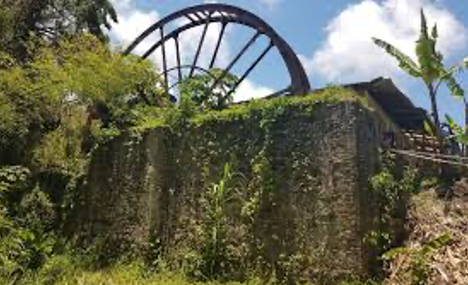
Roxborough Water wheel
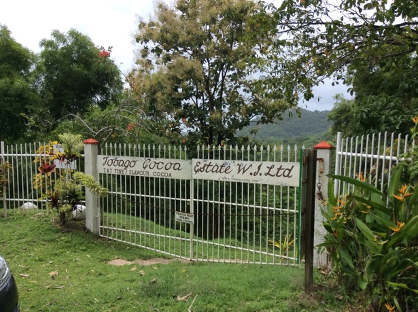
Roxborough Plantation today
Brief History of Tobago
Tobago was ceded to the British along with other Caribbean Islands in the Treaty of Paris in 1663. Sugar was only introduced from Brazil in 1765. The first shipment of sugar out of Tobago went via Barbados to Britain in 1769.The first direct shipment of sugar to England direct, was the following year. Disaster struck in 1776 and 1780 when a plague of sugar ants destroyed the crop and so cotton was planted in its place. Most of the sugar plantations had to have a ready supply of natural running water to drive the water wheels, needed to crush the sugar canes in the process of extraction. The Roxborough plantation was one of these, developed near a natural waterfall.
Between 5th October 1773 and 17th January 1774 there were only 5 arrivals of small sloops and schooners at Bridgetown, Barbados from Tobago. Tobago had no direct connection to the Continental Colonies, as they all went via Barbados. There was also a British Post Office packet out of Falmouth in Cornwall which touched firstly Barbados and then did a circuit of the islands of Grenada, St Vincent, Dominica, Antigua or Jamaica. I wanted to try to find out if fleeing John Paul was, on any of these ships, so I visited the Barbados Museum and wrote to the librarian. She didn’t have those records but gave me the address of the archivist but as yet I have had no reply.
A Fiasco Raid on Tobago
16 January 1779
In mid-January 1779 the large Connecticut Privateer Ship Governor Trumbull (Commander Henry Billings) was off the British island of Tobago in the West Indies. Billings was planning a raid upon the lightly defended island. On 16 January fifty Americans landed in Man of War Bay. The landing party marched to a house owned by Callow and Henderson. Three white men were made prisoners there and three sick blacks were taken and carried away. Meanwhile, the Americans threw up a small entrenchment at Man of War Bay, and armed it with two cannon and some swivels.
The landing party proceeded to the sugar works of one Gordon, which they attacked and burned. The Americans lost three men in this skirmish. From there they moved on to the estate of one Guise, which was also laid waste. Of course the alarm was well out by now. Planters Archibald Stewart, Edmund Lincoln and Lieutenant Oswald Clark mustered fifteen militia and marched toward the northeast quarter of the island, to assist the planters there. The British militia came upon the American landing party in their entrenchment and immediately attacked with small arms. Stewart was shot in the head with a swivel gun; Lincoln was hit in the thigh by a cannon ball. The attack fizzled out.
Lieutenant Clark reorganized his men, dividing them into two parties. A second attack, perhaps on the American flanks, forced them from their entrenchments. They “suddenly retreated on board their Vessel and left the Island.” The Americans left behind twenty-six prisoners and two dead men. Stewart and a crew of 115 men.
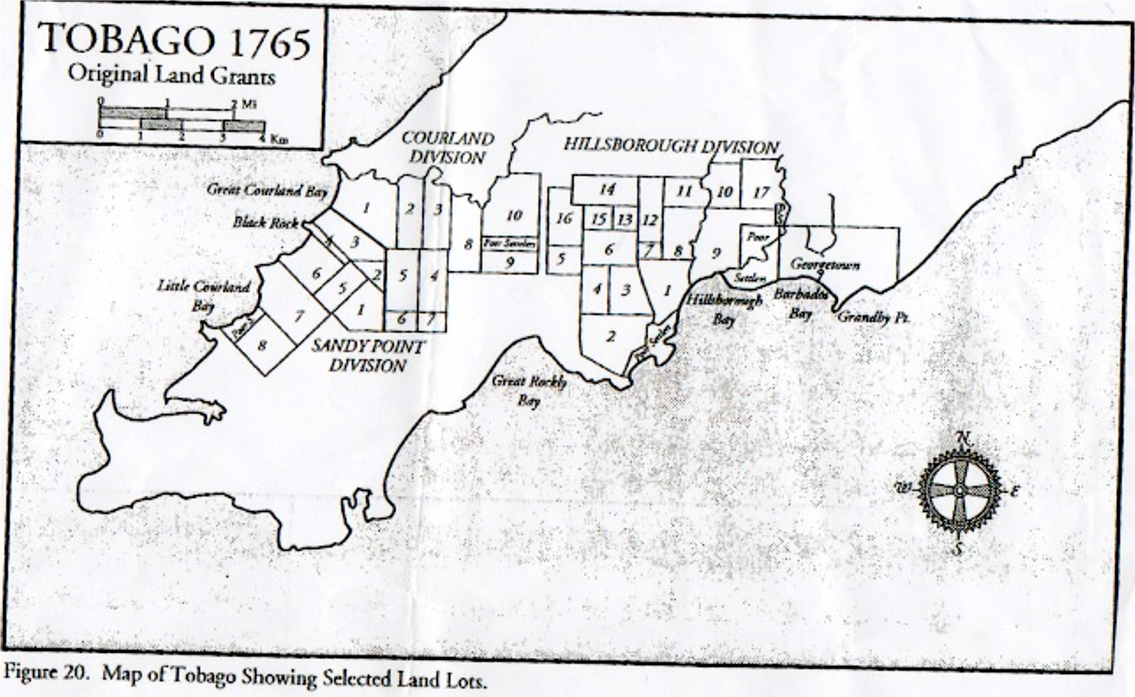
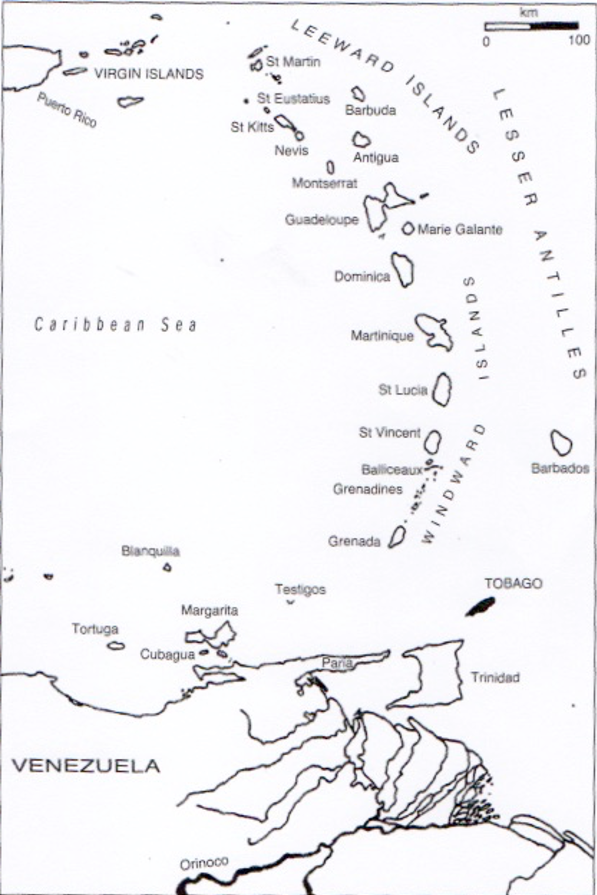
Barbados was established as a sugar producing colony 122 years before Tobago. I discovered some of the reasons why, on my holiday adventure. Barbados is different in construction from all the other Caribbean Islands, which are volcanic in construction, as it was formed from coral that turned into limestone that had lodged in the dip that was created between the Caribbean and Atlantic plates. As the plates overlapped each other over millions of years, the coral limestone collected until it reached the surface, which explains why it is relatively flat. It is the most easterly island too, which is why voyagers from Europe arrived here first. The other Caribbean Islands are volcanic and largely consist of mountainous terrain covered in rain forest, which is much more difficult to cultivate. The clearance of the land for crop cultivation is the reason why African slaves were brought over. Tobago was developed later for crops as primarily it was used as a defensive position.
Tobago is relatively unchanged since the days of John Paul in some ways. The ships still dock at Scarborough except there are cruise ships now too. Courland Bay is still using the large jetty to reach ships moored in the harbour. In the Fort St. George Museum I saw old watercolour paintings of Scarborough’s Rockley Bay, with sailing ships moored in the same place as today. Most of the island is National Park so it’s still lush green rainforest. The mysteries of who was the man was that he killed and what happened to his money, possessions and shares in Tobago are still unresolved, but I feel a little closer to the truth. Archibald Stewart, John’s partner was dead himself by 1779 and John Paul would be forgotten. The Mutinous crew member, if a white man would be buried in Tobago but as records were very scant and depended on your religion, its difficult to find out. The Scots Kirk the Anglican church in Scarborough told me that they had a flood and some records were destroyed. Incidentally one Scot is not forgotten there, Sir William Young the younger has a plaque in the St Andrews Church on Young Street, Scarborough, also named after him.
I am extremely grateful to the people of Tobago and Barbados who helped me in trying to find out details of John Paul, in particular the 2 ladies in the Library in Scarborough
